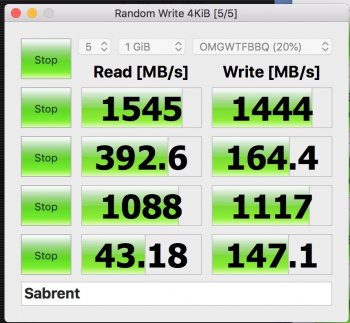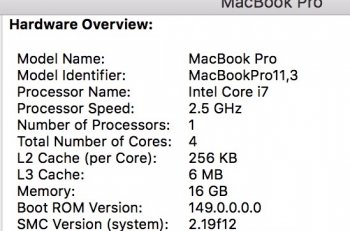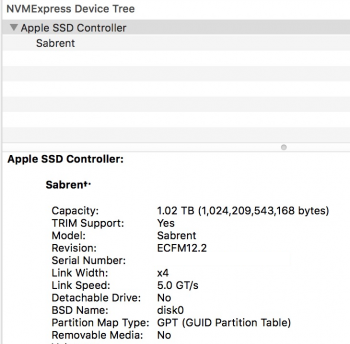Return your EVO PLUS or get a NON Plus (EVO without the PLUS)....
Not compatible
[doublepost=1559785436][/doublepost]
How OFTEN do you write a 200GB file (or group of files) ALL AT ONCE????
QLC may not be the best SSD tech, but it certainly isn't "terrible". Yes, TLC- and MLC-based drives are "better".
but QLC-based drives are a lot cheaper (I do NOT own a QLC drives, NOR do I plan on buying any, but they DO have a place)
In invite you to read a few replies and also SSD guides/tiers from use /NewMaxx on Reddit.
That guy knows his stuff:
https://www.reddit.com/user/NewMaxx/
Here is an excerpt re: QLC - 660P taken from a discussion on Reddit from 2 days ago:
It would be more correct to say that TLC is more consistent than QLC in terms of performance. All drives will slow as they fill, even MLC ones without SLC caching, but drives focused on a large, dynamic SLC cache - typical for consumer-oriented drives - are at a larger risk. The 660p for its part does rely on a large, dynamic cache, although it also has a static portion, which is 24GB for the 2TB SKU. Quite large. But to save myself from writing a lot more I will take an excerpt from AnandTech's review of the 660p, with my emphases:
"Our synthetic benchmark tests have been run both with our standard methodology, and with a completely full drive so that the tests measure performance of the QLC memory (with an SLC cache that is too small to entirely contain any of our tests). The two sets of scores thus represent the two extremes of performance that the Intel SSD 660p can deliver. The full-drive results in this review represent a worst-case scenario that will almost never be encountered by real-world usage, because our tests give the drive limited idle time to flush the SLC cache but in the real world consumer workloads almost always give SSDs far more idle time than they need."
I would suggest especially to read their conclusion which highlights specific weakpoints. For some people it is a dealbreaker. For others it might make 0 difference, and the 660p at its best is actually almost as fast as the fastest drives (SM2262/EN) for consumer workloads, even when fuller. But if you want consistency and reliability of performance a TLC-based SATA drive like the WD Blue 3D is a good option.
d3lap
1 point·
2 days ago
Not sure if my post made it seem like I was against the 660p or qlc drives in general. Quite the opposite. I run a 6000 pro in my system and recommend it. I was simply trying to answer OP's question regarding why a 2tb qlc nvme drive is cheaper than a 2tb Sata ssd.
NewMaxx
1 point·
2 days ago·edited 2 days ago
The 660p's controller is a bit more complex which adds some cost, although it makes that back (and then some) by only having 256MB of DRAM cache. QLC for TLC is a more direct cost savings as technically in the same process node QLC will be up to 33% cheaper per GB. The constant/flat costs (e.g. PCB) largely remain the same if we're comparing in the M.2 form factor. Bit of a simplification obviously as there are other details/concerns (like the fact the 660p's large static/dedicated SLC cache portion means less reserve blocks which impacts endurance) but that is the essential breakdown of why it's cheaper. Of course there is some relation to performance here - because of that static SLC, the 660p relies entirely on folding to improve the write amplification factor for endurance (not true of the SATA-based Samsung 860 QVO, I believe), and because of the smaller DRAM cache it's more reluctant to flush writes anyway which can leave it flat-footed when fuller (which does not apply as much to the Crucial P1, which in turn can have read latency issues due to being more aggressive).
So I was specifically responding to your points on performance as directly they do not reflect the price difference so much as being a consequence of it. Of course, someone looking to maximize their purchase (best value) will be looking at performance. It's just that's it's more indirect as a pricing concern, if you know what I mean. (the manufacturer does have to consider things like warranty, but this is generally not an issue in the consumer market as even QLC has pretty high TBW)









